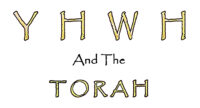Introduction
The Book of Jubilees (Sĕfer ha’Yoḇelim) covers much of the same ground as
Bereshith (Genesis), but often with additional detail. The entire history of
creation, and of Yisra’ĕl up to that point, is recounted in divisions of 49 years
each, or Yoḇelim (Jubilees) – the elapsed time from the creation, up to Mosheh
receiving the Scriptures on Mount Sinai.
Between 1947 and 1956, approximately 15 Yoḇelim scrolls were found in five
caves at Qumran among what are known as the Dead Sea scrolls, all written in
Hebrew. The large quantity of manuscripts (more than for any biblical books
except for Psalms, Deuteronomy, Isaiah, Exodus, and Genesis, in descending
order) indicates that Jubilees was widely used at Qumran.
As with many extra-Biblical writings, there is some controversy as to whether the
Book of Yoḇelim should be included among canonical Scripture, despite the fact
that it was well known to early believers with some parts being incorporated into
the earliest Greek version of the Jewish Bible, the Septuagint. However, it was so
thoroughly suppressed in the 4th century that no complete Hebrew, Greek or
Latin version has survived. The Book of Jubilees is considered canonical by the
Ethiopian Orthodox Church as well as Jews in Ethiopia, where it is known as the
Book of Division. A comparison of the Dead Sea scrolls with the Ethiopic version,
found that the Ethiopic was in most respects an accurate and literalistic
translation.
This translation of the Book of Jubilees is based on the Ethiopiac text translated
by R. H. Charles in 1917. The Name of YHWH has been restored in paleo
Hebrew along with the majority of names transliterated from Hebrew sources
to give an accurate pronunciation. As with 𐤉𐤄𐤅𐤄 Scriptures, all pagan
influenced words pertaining to 𐤉𐤄𐤅𐤄 have been avoided and the Hebrew words
used have been included in the GLOSSARY.
